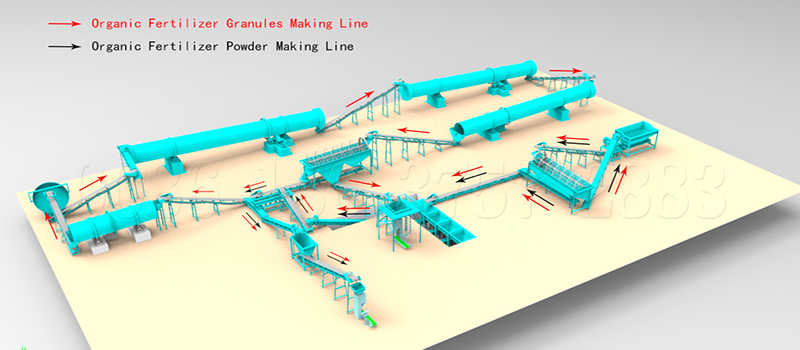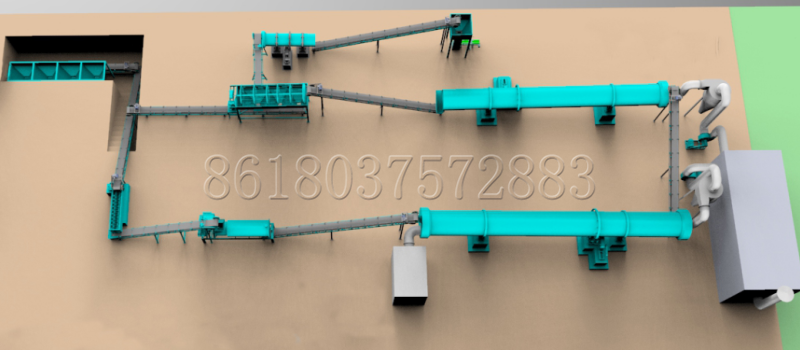On the off chance that you have a natural nursery, you should realize that there is no compelling reason to utilize compound manures for bother control (natural composts versus substance composts). At that point you will realize that there is a decent measure of characteristic manures that we can use for this reason. Today we show you the five most utilized natural manures and its advantages for our trees:
Manure as a natural compost
Manure is natural issue that has been decayed and reused as a compost and soil revision. Fertilizer is a key fixing in natural cultivating.
At the easiest level, the way toward fertilizing the soil just requires making a load of wetted natural issue known as green waste (leaves, nourishment waste) and trusting that the materials will separate into humus following a time of weeks or months. Present day, efficient fertilizing the soil is a multi-step, firmly observed procedure with estimated contributions of water, air, and carbon-and nitrogen-rich materials.
Manure is wealthy in supplements. It is utilized in gardens, finishing, cultivation, and farming. The manure itself is valuable for the land from numerous points of view, including as a dirt conditioner, a compost, expansion of essential humus or humic acids, and as a characteristic pesticide for soil.
Espresso as a natural manure
Espresso utilized as a manure isn’t actually another thought. Numerous planters add espresso beans to compost heaps where it breaks down and blends in with other natural issue to make some incredible supporting soil.
Commercial Espresso beans are around 2 percent nitrogen by volume, nitrogen being a significant part for developing plants. Fertilizing the soil grounds presents microorganisms that separate and discharge the nitrogen as it raises the temperature of the heap and helps in executing weed seeds and pathogens. Prepared espresso additionally contains quantifiable measures of magnesium and potassium, which are building hinders for plant development too.
WOOD Debris as a natural compost
Wood debris is a phenomenal wellspring of lime and potassium for your nursery. Not just that, utilizing remains in the nursery likewise gives huge numbers of the follow components that plants need to flourish. However, wood debris manure is best utilized either softly dissipated or by first being treated the soil alongside the remainder of your fertilizer. This is on the grounds that wood debris will deliver lye and salts on the off chance that it gets wet. In little amounts, the lye and salt won’t cause issues, yet in bigger sums, the lye and salt may consume your plants.
VERMICOMPOST as a natural manure
Vermicompost is the item or procedure of fertilizing the soil utilizing different worms, normally red wigglers, white worms, and different night crawlers, to make a heterogeneous blend of deteriorating vegetable or nourishment squander, bedding materials, and vermicast, additionally called worm castings, worm humus or worm fertilizer, is the finished result of the breakdown of natural issue by a night crawler. These castings have been appeared to contain decreased degrees of contaminants and a higher immersion of supplements than do natural materials before vermicomposting.
Containing water-dissolvable supplements, vermicompost is a fantastic, supplement rich natural manure and soil conditioner.
EGG SHELL as a natural manure
Whenever you split a couple of eggs to make breakfast or a prepared decent, don’t hurl away the shells. On the off chance that you garden, the supplements found in eggshells give a not too bad and economical wellspring of manure for your plants. In contrast to manufactured composts, when you use eggshells in your nursery, you don’t need to stress over going over the edge. Remember that eggshells alone won’t give satisfactory sustenance to plants.
Plants need calcium to flourish. Calcium enables the plants to build up a solid cell structure. Calcium insufficiency is noticeable in youthful plants, on the grounds that the leaves are contorted or have dark spots. In fruiting plants, for example, tomatoes, an absence of calcium is clear when the organic products create bloom end spoil, or a slim, dull spot on the base of the natural product. An extra advantage of eggshells in the nursery is that bigger shell pieces help dissuade slugs.







